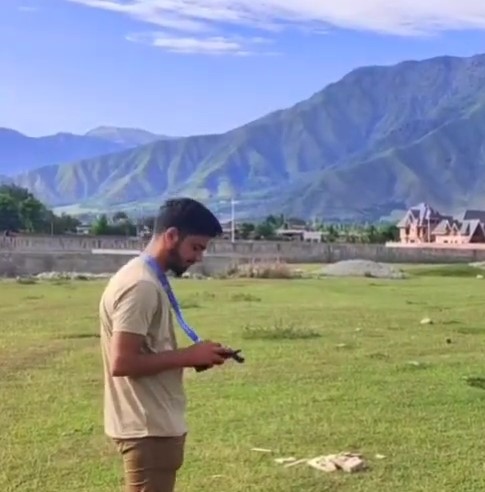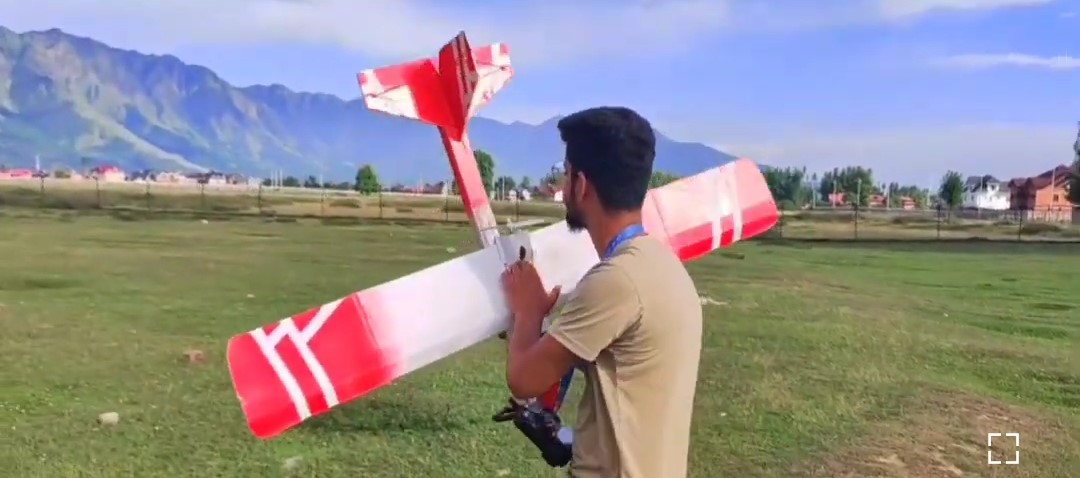In an age where technology has become a vital part of healthcare, innovations that bridge gaps in medical services are particularly noteworthy. One such innovation comes from the picturesque valleys of Kashmir, where a young boy named Aban Habib has made headlines for his groundbreaking invention: a drone specifically designed for the rapid transport of blood supplies in emergency situations. This remarkable development promises not only to save countless lives but also to revolutionize healthcare access in some of the most remote areas of India.
The Vision Behind the Invention
Aban Habib, hailing from Srinagar, was inspired to create his life-saving drone following the catastrophic floods that struck the region in 2014. Witnessing the struggles faced by healthcare providers in delivering essential medical supplies during emergencies, he realized that traditional methods of transportation often fell short. Roads could be blocked or rendered impassable, and time is always of the essence in medical emergencies. Aban’s vision was clear: develop a solution that could efficiently deliver crucial medical resources to those in dire need, regardless of geographic barriers.

Conceptualizing the Drone
Aban began his journey by researching existing drone technologies and understanding their applications in various fields, particularly in healthcare. He studied how drones have been utilized in other countries for similar purposes, like delivering vaccines and medical supplies in hard-to-reach areas. With this knowledge, he conceptualized a drone capable of transporting blood samples, donations, and other essential medical supplies swiftly and securely.
Design and Development
The design phase was both challenging and rewarding. Aban worked tirelessly, often late into the night, experimenting with different models and configurations. He focused on ensuring that the drone could cover significant distances while maintaining speed and stability. His prototype was designed to fly at speeds of up to 80 kilometers per hour and had a range of over 70 kilometers.
Aban also considered the specific requirements of transporting blood, which necessitated maintaining a controlled temperature. His drone features a specialized compartment designed to keep the blood supply at optimal temperatures, ensuring its viability upon arrival.
Collaborations and Support
Recognizing the importance of collaboration, Aban reached out to various corporate entities and technical experts for support. These partnerships were crucial in refining his drone’s technology and expanding its capabilities. By leveraging expertise from experienced engineers and drone specialists, he was able to optimize the drone’s design for both efficiency and reliability.
Additionally, local universities and institutions provided invaluable resources and mentorship. Aban participated in workshops and training sessions, gaining insights into advanced technologies and methodologies that further enhanced his project.

Successful Testing and Implementation
Aban’s drone underwent rigorous testing in Himachal Pradesh, where it successfully demonstrated its capabilities. The tests involved connecting multiple satellite hospitals to a central hospital, showcasing the drone’s ability to deliver blood supplies quickly and efficiently. In one notable trial, the drone covered over 70 kilometers, linking 20-25 satellite hospitals and significantly reducing the time required for blood delivery.
These successful trials were pivotal, as they not only validated the drone’s functionality but also attracted attention from healthcare professionals and government officials alike. The positive feedback encouraged Aban to push forward with his vision, and discussions began regarding the potential for large-scale implementation.
Impact on Healthcare Accessibility
The implications of Aban’s drone extend far beyond mere convenience. In many rural and remote areas, access to healthcare is limited due to geographic challenges. Patients in need of blood transfusions often face delays that can be life-threatening. By utilizing drones, these delays can be significantly minimized, providing timely medical assistance when it is needed most.
The drone’s ability to transport blood supplies from urban centers to rural healthcare facilities could effectively bridge the gap between available medical resources and the patients who need them. This innovation has the potential to drastically improve health outcomes and reduce mortality rates in underserved areas.
Economic Development and Sustainability
Aban’s vision goes beyond healthcare; he aims to create a sustainable business model around his drone technology. By establishing a drone delivery service for medical supplies, he envisions not only saving lives but also generating employment opportunities for local youth.
The plan involves training young people in drone operation, maintenance, and logistics, thereby equipping them with valuable skills for the future. As the demand for drone technology grows across various sectors, Aban’s initiative could position the youth of Kashmir at the forefront of this technological revolution.
Challenges and Future Prospects
While Aban’s invention is a monumental step forward, it is not without its challenges. Regulatory hurdles, logistical issues, and the need for funding are significant obstacles that must be addressed. Securing financial support for scaling the project is crucial, as the initial trials were primarily funded through personal savings and small grants.
Moreover, establishing a framework for drone operation within the healthcare system requires collaboration with governmental and non-governmental organizations. Navigating the complexities of healthcare logistics and ensuring compliance with aviation regulations are critical for the project’s success.
Despite these challenges, the future looks promising. With growing interest from investors and healthcare organizations, there is potential for this innovative solution to gain traction on a larger scale. Aban is actively seeking partnerships to fund and expand his initiative, aiming to launch a pilot program within the Kashmir valley.
Conclusion
Aban Habib’s life-saving drone marks a significant milestone in both technological advancement and healthcare accessibility in India. His journey from a young boy with a vision to a pioneering innovator exemplifies the power of determination and creativity in addressing critical challenges.
As we look towards the future, Aban’s innovation has the potential to not only save lives but also inspire a new generation of thinkers and doers in Kashmir and beyond. By harnessing technology to solve real-world problems, Aban is paving the way for a brighter, healthier future for communities in need.
With continued support and investment, the dream of an efficient, reliable healthcare delivery system powered by drone technology can become a reality, transforming the landscape of medical assistance in remote regions across India.
You Might Also Like:
Breaking News: Two Labourers shot dead, three others injured in Sonamarg
4th Annual National Conference of Addiction Psychiatry organised at SKIMS Srinagar
Engineer Rashid Reviews Healthcare, Infrastructure in Karnah at Mini-Secretariat
Halqu e Adab Sonawari (HAS) Honors Literary Icons at Municipality Hall in Annual Conference

